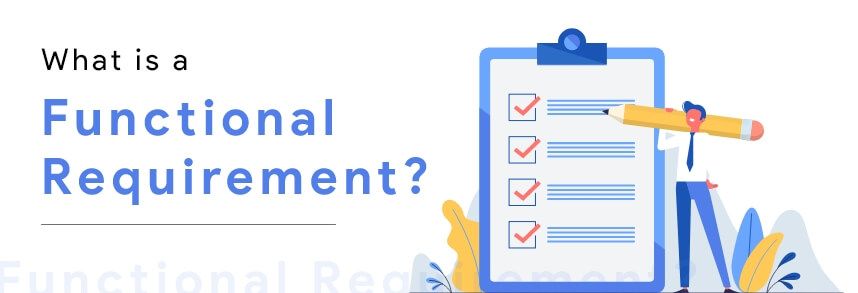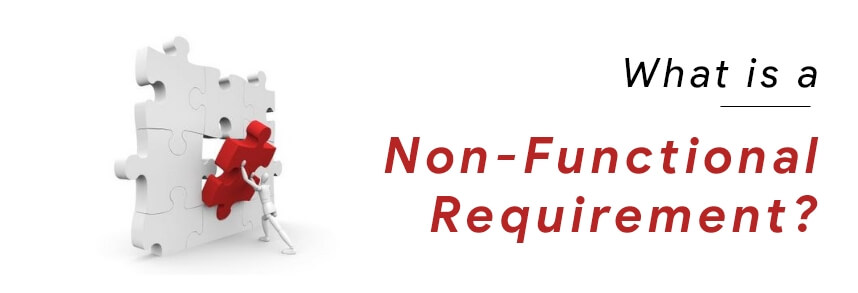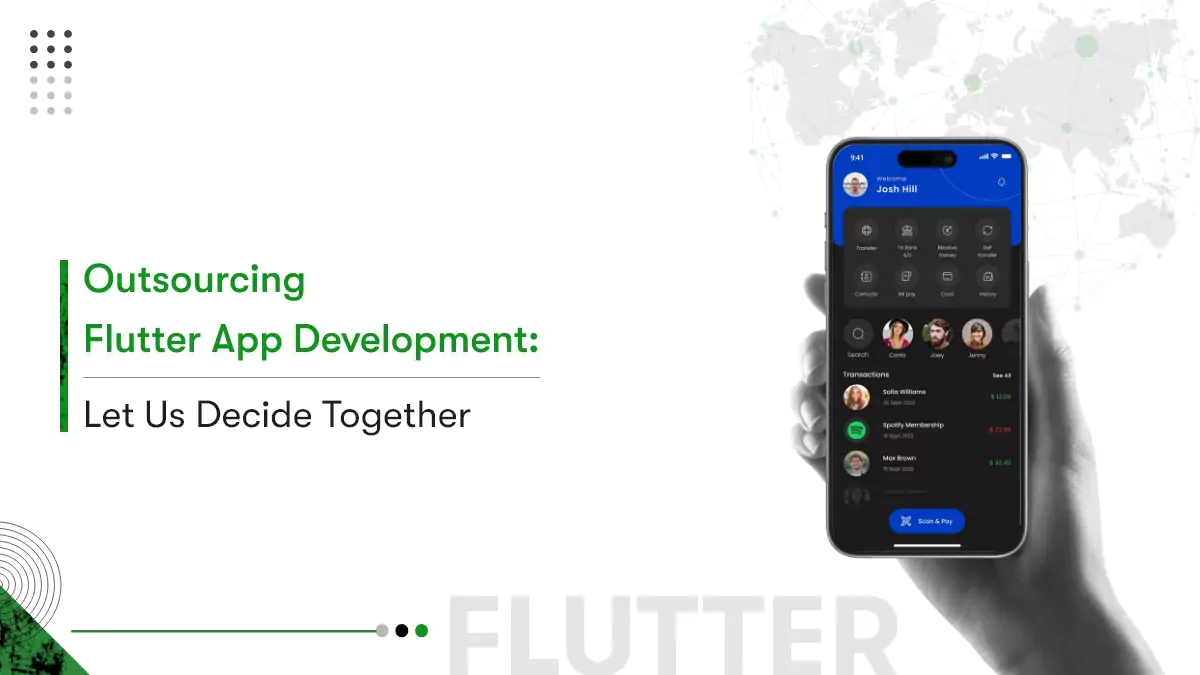Like other professions, project management also has its own jargon that is frequently shared between software engineers and clients. You will hear terms like “functional requirements” and “non-functional requirements” regularly exchanged when a project is being initiated. If you are a novice in the project management field, you may feel like an outsider if you have no knowledge about functional vs. non-functional requirements. And hence, we have planned this blog specifically for those who want to have an in-depth understanding of the functional and non-functional requirements.
Let’s begin this blog by understanding the following scenario. Suppose that you have initiated the renovation of your old patio. You know that you want to refurbish the look with subtle color, either white or ivory color, and want to have a flyscreen installed. But wait, what about the surface of the patio? Do you want it to be concrete, gravel, tile, or sand? You know that you are going to use the patio for outside entertainment with family and friends. But you do not know how and what surface will add on to the convenience?
This further means that you know the purpose of renovation; however, you do not know what all things will help you meet the purpose. And if you do not pay enough attention to the things that will enrich the patio experience you are expecting, your “purpose” of renovation fails. A nightmare, isn’t it? This situation is exactly the same when we talk about the functional and nonfunctional requirements of the project.
In other words, all the requirements should be given enough thought, understood, and well-drafted for any project to be successful. In software technology terms, say for instance,
- You do not know how the system will respond to the change in workloads?
- Also, you do not know how frequently the system faces downtime?
To compile up, you must clearly define all your requirements to the business analyst while you initiate your project discussion.
The understanding of the entire mobile app development process also plays a major role in defining the requirements of an application. Here is the index for your easy reference. Click on the link to grab a better understanding of each step that will help you in drafting your functional, non functional requirements.
- A Guide on Lean Canvas Model;
- How to Prepare a Product Requirement Document and its importance;
- Importance of Wireframe in Product development;
- A complete guide on selection of technology stack for startups;
- How prototyping helps businesses?
- A handbook to select development company for startups;
- A detailed guide on project management & delivery milestones;
- Role of Quality assurance in product development;
- Importance of User testing;
- Know where you should deploy your project?
- How Feedback and product iteration makes a difference in product development?
- What is the variation in the cost? What factors affect the variation?
- Why is a Good design the ultimate thing in the project?

You may ask how it will impact if you miss on communicating or defining your project requirements?
Well, an undiscussed yet important project requirement may doom you to failure. This failure may be in the form of degraded quality, higher cost, poor performance, or unpleasant design.
However, it is also a fact that you always wish to deliver a product that your customer will embrace, but nothing happens without effective communication. Every individual working on the product runs in haywire without knowing the product-specific goal. Well, if our words don’t, the below-mentioned figures might convince you more, over this thought.
- You disturb your project timeline and budget by almost 60% if you do not specify the requirements clearly.
- Also, these unspecified requirements later can charge you over 41% of your budget.
- Only 68% of projects succeed in delivering the expected product by meeting the quality standards by effective communication.
- Almost 32% of IT projects have failed because of unclear project requirements and estimation.
Without a clearly defined project requirement, you may miss upon your project’s scope, which may cost you at later stages. Additionally, you would have to invest both time and money behind correcting the mistakes and improving the quality.
So there is always a competition similar to what comes first, an egg or a hen? Similarly, what comes first, functional requirements Vs. non-functional requirements. So let us understand both the terms from their definition.

What is a Functional Requirement?
Functional requirements are primary requirements that define a system or a component. It specifies how a system should work and behave upon certain inputs. The functional requirements can be anything, an output, a behavior, or a change in functionality upon any action.
It defines how a system is expected to perform over certain functions. It can be anything from a calculation, user interaction, data manipulation, anything. In simple words, it is based on “if-then” behavior theory, “If” this is triggered, “then” what is the result? If not specified, the system may falter or not work properly.
Functional requirements are the features you define in a product that will enrich the customer experience. The implementation of functional requirements is directly visible in the final product.

What is a Non-Functional Requirement?
Non-functional requirements are those that lay the foundation for a quality user experience. It checks on the quality attributes of the system and ensures the effectiveness of the function. Non-functional requirements help you judge the overall quality of the functions and the system from a user-oriented perspective.
If we define the functional requirements as “how the system will work?” then a non-functional requirement can be defined as, “how we expect the system to work upon an interaction”?
A non-functional requirement lets you highlight the constraints of the system that may arise after developing the product. Also, you can put constraints/limits over the functionality of the system.
Having said that, a functional product can be developed without defining non-functional requirements, however, the quality of the software may suffer. But its success will always be a question, because they help in defining the usability issues! You may lose out on your customers if you haven’t paid attention to the NFRs.
Hence, we can say both the requirements are of equal importance and interconnected. If you falter over anyone, the whole system is affected.
Let’s look at the benefits of defining the functional and non-functional requirements.
-
It brings the team and the stakeholders on the same page:
Once you have a well-defined and clear business requirement, you can explain the same in-depth to the stakeholders and bring them on the same page as you are.
-
It reduces the time spent behind irrelevant communication:
A step by step approach towards the mentioned requirements ensures that all the process requirements are acknowledged. This way, the whole team and BA work in collaboration, resulting in faster and expected results of development.
-
It gives you a more precise budget estimation:
A detailed understanding of the project requirements allows you to give a precise estimation of the project.
-
Develop a bug-free application:
It is often observed that any variation or change in functionality at later stages, often leads to error in the system. On the other hand, if you identify and rectify these errors at the inception phase, then you can develop a bug-free application on time.
All in all,
- Defining functional requirements and nonfunctional requirements helps you know what the missing requirements are;
- It makes the entire project management task easy and accessible for the entire team;
- Describing the requirements, you make sure that you are meeting the legal and compliance rules;
- It gives you a chance to bide by the security policy and deliver an extravagant user experience.
Thus we can conclude that functional and non-functional requirements make you ready for what you have thought of your dream project.
Have a look at the below table and grab a better knowledge about both.
| Functional requirements | Non-functional Requirements |
| Describes how a feature should work | Describes which properties will make the feature work |
| Focuses on the output of user actions | Focuses on simplifying the process and execution of the output on user actions |
| Defines user requirements | Defines user’s expectations and experience |
| It has functions covered in use cases | It has constraints which will help in reducing development time and cost |
| Verifies the functionality of the system | Verifies the performance of the system |
| It is defined by the user | Team lead, developers and software architects define the non-functional requirement. |
| It is mandatory to define functional requirements | It is not mandatory to define non-functional requirements |
| Applicable at component level | Applicable to the system as a whole |
Functional Requirements Examples:
The list of functional requirements examples comprises every system behavior, changing under the applied function. If the functional requirements are not acknowledged, the system will not function.
- User authentication upon request;
- Business rules;
- Server logs of all the existing data;
- Audit tracking;
- Administrative functions;
- Report generation in a specific period;
- External interfaces;
- Historical data generation;
- Authorization levels;
- Defining authorization levels of the system.
Non-functional Requirements Examples:
The list of non-functional requirements include,
- Performance;
- 2-level authentication;
- Capacity;
- Reliability;
- Maintainability;
- Scalability;
- Serviceability;
- Security;
- Usability;
- Data integrity;
- Environmental;
- Regulatory;
- Interoperability;
- Recoverability
A further elaboration of the non-functional requirements is,
- The system should record every unsuccessful attempt of login;
- The system should be capable of handling the XYZ number of users ensuring seamless performance;
- Users should change the password after the first successful login.
- Your application should adhere to the laws of the state or the government.
- The dashboard should appear within 3 seconds after the user’s login.
- The background color of all the screens should be #fff3b5.
We hope these examples give you a clear understanding of how non-functional requirements pay attention to the quality attributes of a system. However, both the client, as well as the development team, might forget to discuss the non-functional requirements at the initial phase. And this may result in a conflict later.
How to define a functional requirement?
If your approach towards development is Agile, you probably will define the requirements in a doc. The functional requirements document will include user stories, use cases, and also the following sections.
- Purpose: This section will include all the background, definitions, and system overview;
- Describe the scope of product, the expectations, and the business rules;
- Define the database requirements, system attributes, and functional requirements;
- Include the use cases, which means describe how a user will interact with the system. Define the role of every actor participating in the interaction;
- Write down the goal of the product clearly.
- Mention user stories that will describe in detail how a user will engage with the developed product step by step.
- Develop clickable prototypes. This will help you to represent the product in a better and convincing way to the stakeholders. You can either go for throwaway prototypes or interactive prototypes for your project.
How to define a non-functional requirement?
Now comes the part where you define the quality expectations of the product. These attributes describe the ways in which you expect your product to behave.
- Define the usability expectations from the product.
- Describe in the document which laws and regulations should the product adhere to.
- Define the availability of the application, which means will it function 24/7/365?
- Determine the performance of the product solution for various functionality. This means, in how much time the user should see the list, how long the user will be connected with the app if there is no internet connection, etc.
- Define the security requirements of the system.
- Use automated testing tools like Selenium, TestComplete, and Appium to reassure product performance.
How are the functional and non-functional requirements written and represented?
Defining both functional and non-functional requirements during project initiation is like brainstorming the idea of the product. You can collect the requirements and prepare a document individually.
You can prepare a system requirement specification (SRS), where both the requirements are mentioned in a single document. This document is highly narrative and defines the purpose and objective of the product clearly. The functional requirements of the solution can be broken down into the Work Breakdown Structure (WBS) structure, where the entire process is divided into components. These components are so small that they can not be divided further.
Another approach to defining the document is taking the user stories approach. In this approach, the process is divided into various states, like actors and the roles. The user stories approach allows you to consider the requirements of every user and define their needs accordingly.
Final Words:
Referring back to the question, what comes first, non-functional requirements or functional requirements? Well, we would say both of these are intertwined. You may prepare a working model by collecting the functional requirements but may not be able to deliver an expected and satisfactory solution. Hence, defining clear and understandable requirements is the key to the success of the product.
By defining the functional and non-functional requirements, you would be able to define accurate and precise results. Also, the entire team is clear about the product expectations, and thus you can expedite the process of development.
Note: Ensure that you cover every scenario and address them in detail. You can study the competitors and set your benchmarks if required to define the needs clearly. Create a better and bigger picture by defining the functional and non-functional requirements right at the inception stage. If you need any assistance in defining the project approach, you can contact our business analyst team at Kody Technolab.














 Contact Information
Contact Information